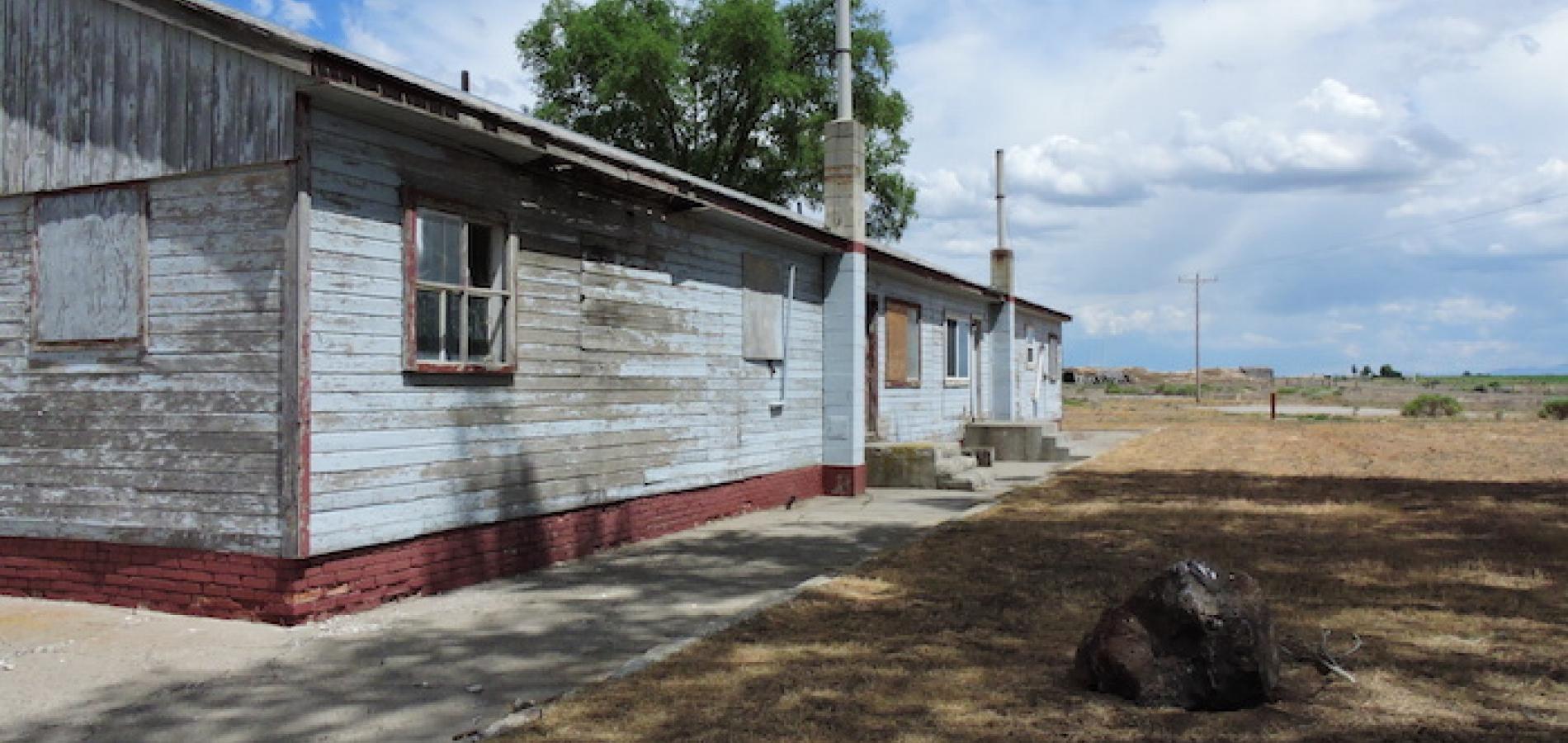There has been lots of discussion and debate on the Traveler in recent months over the size of the National Park System as well as the propriety of some of the units in that system. Most recently, a reader took issue with a piece looking at Fort Vancouver National Historic Site that questioned what the goal of the historic site really was.
”I understand that the National Parks Traveler isn’t meant to be an 'echo chamber' for the NPS, but perhaps we can give the American people the benefit of the doubt that the special places, with their irreplaceable natural and cultural resources, were set aside in perpetuity for a good reason. Over the course of history, the decisions made at this site have huge implications for the people of the Pacific Northwest, and it is important to our American history,” the reader wrote.
There’s no question that Fort Vancouver tells an invaluable story of our country’s Western expansion. But the question this story should raise in readers' minds is whether the National Park Service has all the tools and resources to properly tell that story?
As Lee Dalton pointed out, the exhibits and displays at Fort Vancouver were wanting. Some were disabled. Some of the structures were boarded up. Some have been rented to businesses and some were private homes.
What role in interpreting and telling the history of the Pacific Northwest can the National Park Service accomplish when its hands are so tied by a lack of funding and staffing that it can neither offer compelling stories or keep facilities open for the public to explore? Articles such as the one on Fort Vancouver should send a message to both the National Park Service that it can be doing a better job and to the general public that it must raise its collective voice to Congress to ensure that the Park Service can manage to do a better job.
As was pointed out last month in a comment to an Op-Ed piece on saving the National Park System, an anonymous Park Service division chief lamented that the agency's ”mission is beyond fragmented and our hands are increasingly tied by the lingering effects of the sequester, outdated HR policies, hard hiring/budget caps, the endemic maintenance backlog, and systemic issues within contracting, acquisitions and IT.”
We are 12 months away from celebrating the 100th anniversary of the National Park Service. But with conditions such as those at Fort Vancouver and Minidoka National Historic Site, the fight over preservation at both Biscayne National Park and Big Cypress National Preserve, and serious concerns voiced from within the National Park Service, what sort of celebration will it be?
As much as it’s good to see visitation to the national parks growing, as well as excitement around the Park Service's upcoming birthday, wouldn’t it be great to read stories of Congress funding massive improvement projects in the park system similar to the $107 million investment Parks Canada announced just recently at Waterton Lakes National Park?






 Support Essential Coverage of Essential Places
Support Essential Coverage of Essential Places







Comments
When we start valuing our public lands one tenth as much as we value our military, we might have a chance at improving conditions at all the National Parks, heritage sites, and historical sites. As it stands, the DOD budget is around $496 billion; the DOI budget: $12 billion. Unfortunately, congress is still working on cutting the latter and boosting the former. Even just 1% of the DOD budget transferred to DOI would make a huge difference. Will I see that? Probably not in my lifetime.
Yeah, we can always call out the grizzlies to defend us the next time we are attacked.
It would be great if, like you say, Congress gave way more funding to the national parks.
However, I take issue with the way Fort Vancouver is portrayed here. Have you ever been there yourself?
Are you basing all your opinions on Lee Dalton's perspective? I'm assuming he is a straight, white, cis-gendered male of a certain age. I think you should entertain more diverse opinions.
National Parks Traveler is supposed to PROMOTE public lands. That's not really the focus these days it seems.
Your statement reflects exactly how blind liberals are.
If it were not for a great military, the national parks, nor any of the rest of the land that we live in would be what it is today. And, in today's world climate, a military decimated by a limited budget threatens all our freedoms.
You're a fool if you think terrorist regimes would not take advantage of that and make themselves welcome on our land!
What the national parks need are less bureaucracy and micromanagement; less politics and more maintenance. As it stands, you could give DOI a trillion dollar budget and they'd piss it all away.
I believe National Parks Traveler serves a valuable purpose to all those of us who support our national parks as a forum to voice our opinions and criticisms on how the National Parks are managed. The Traveler should not be just a cheering section for the vast numbers of us who love our National Parks. That said, I would like to remind the readers of the travelers that the problems of the present day go back to the beginning of the founding of the National Park Service. This is why history is important to see how previous generations faced and successfully overcame these problems. By way of historical interested I would like to direct Traveler readers to look at the following article published in 1953 concerning the low state of funding and crumbling infrastructure of our parks. I think all will find it of interest.
The Poverty Years
1942-1956
The bonanza of development, expansion, and reinterpretation that came to the
national park system during the Depression years abruptly ended with Pearl
Harbor. In a matter of weeks, federal work programs halted, funding dried up,
and personnel began leaving for the military or wartime support industries. As
in World War I, there were calls for use of park lands and resources to support
the war effort. Pressure particularly focused on grazing, lumbering, and mining
the great western parks. During the earlier conflict, grazing had been allowed,
in part due to inadequate understanding of its ecological consequences but
primarily because the fledgling Park Service felt politically incapable of
blocking it.
By 1942, however, a mature national park system, beloved by the populace,
handily rejected the requests for intrusion by consumptive users. In a major
statement Director Newton Drury spelled out the reasons why, even in times
of emergency, the park system should remain inviolate. Drawing upon letters
from servicemen overseas he painted an image of the parks as icons for
America to be preserved pure and unabused for their inspiration. This article
represents one of the clearest statements of the NPS philosophy that
preservation supersedes all extractive uses regardless of their monetary worth.
The Park Service was able to resist such intrusions throughout World War II.
The war years gave the National Park Service time to reflect on the status and
future of the parks, and those employees remaining in the system engaged in
elaborate planning for the expected return to prosperity and development after
the war. Many plans challenged the level of development already present in
some parks. Reflecting on these questions in 1945, the National Parks
Association released a declaration of policy entitled "National Primeval Park
Standards." Its recommendations demonstrated the increasing division
between the Park Service's ideas of management and those of the
conservation groups.
The expansion of the park system became a volatile issue in Congress by
1950. Antagonism to parks creation and expansion focused especially in the
West among the consumptive local users recently denied access during the
war. One of the key fights of the period culminated in the expansion of Grand
Teton National Park in 1950. In this enactment, Congress stipulated, under
pressure from the Wyoming delegation, that no further parks or monuments be
established in that state without specific congressional authorization. This is
notable for its challenge to the Antiquities Act and demonstrative of the
backlash by western locals against the expansion of the park system.
Three years later Congress acted again, this time by defining the national park
system and emphasizing that all units were to be managed under the Organic
Act of 1916. This answered the criticism of many that monuments, historic
parks, etc., should not be as stringently protected and denied to consumptive
users....
(You will need to download the entire book and then go to chapter 4)
https://irma.nps.gov/App/Reference/Profile/611092